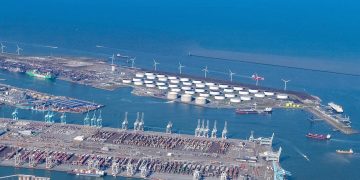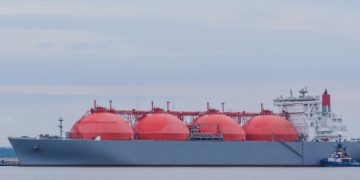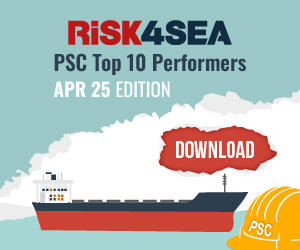DNV GL presented Hyundai Mipo Dockyard (HMD) with an approval in principle (AIP) certificate, for a new double side hull LPG carrier design – LPG SAFE (Structural Advances for the Environment). The result of a development project conducted by HMD, in cooperation with DNV GL, the AIP certificate confirms that the design complies with the new DNV GL rules for the classification of ships.
In particular, the LPG SAFE is the first 38K LPG carrier design to provide the safety benefit of a double side hull, while offering the same cargo carrying capacity and the same construction cost as a conventional design.
“We have been able to maintain the same cargo capacity as the single side hull design by optimising the structural configuration of the no. 1 and no. 3 cargo tanks design, in combination with finite element (FE) analysis and using the DNV GL rules to optimize the scantlings, weight and hull strength,” says Dug Ki Min, Vice President, HMD Seoul. “Furthermore, the new design with its simple hull shape and double hull construction could offer our employees an improved working environment during production of the vessel, resulting in higher quality deliveries.”
LPG carriers are designed to carry liquefied gases, such as propane or butane in bulk. The ships are normally equipped with cargo tanks inside the hold, with Type A independent cargo tanks arranged inside the hold, supported on insulation-bearing blocks, which typically consist of wooden chocks installed on the inner bottom structure. The double side hull design of LPG SAFE offers a significant increase in protection for these tanks, especially in the event of a collision.
“It has been a great pleasure for us to work with HMD throughout their design and analysis process and our verification and review of this concept,” says Hwa Lyong Lee, Regional Business Development Manager, DNV GL – Maritime. “The LPG SAFE design has shown a measurable improvement in safety, while retaining capacity, strength and cost, and we are very honoured that HMD selected us to work with them to realize this extremely interesting and exciting concept.”

Source: DNV GL



























































